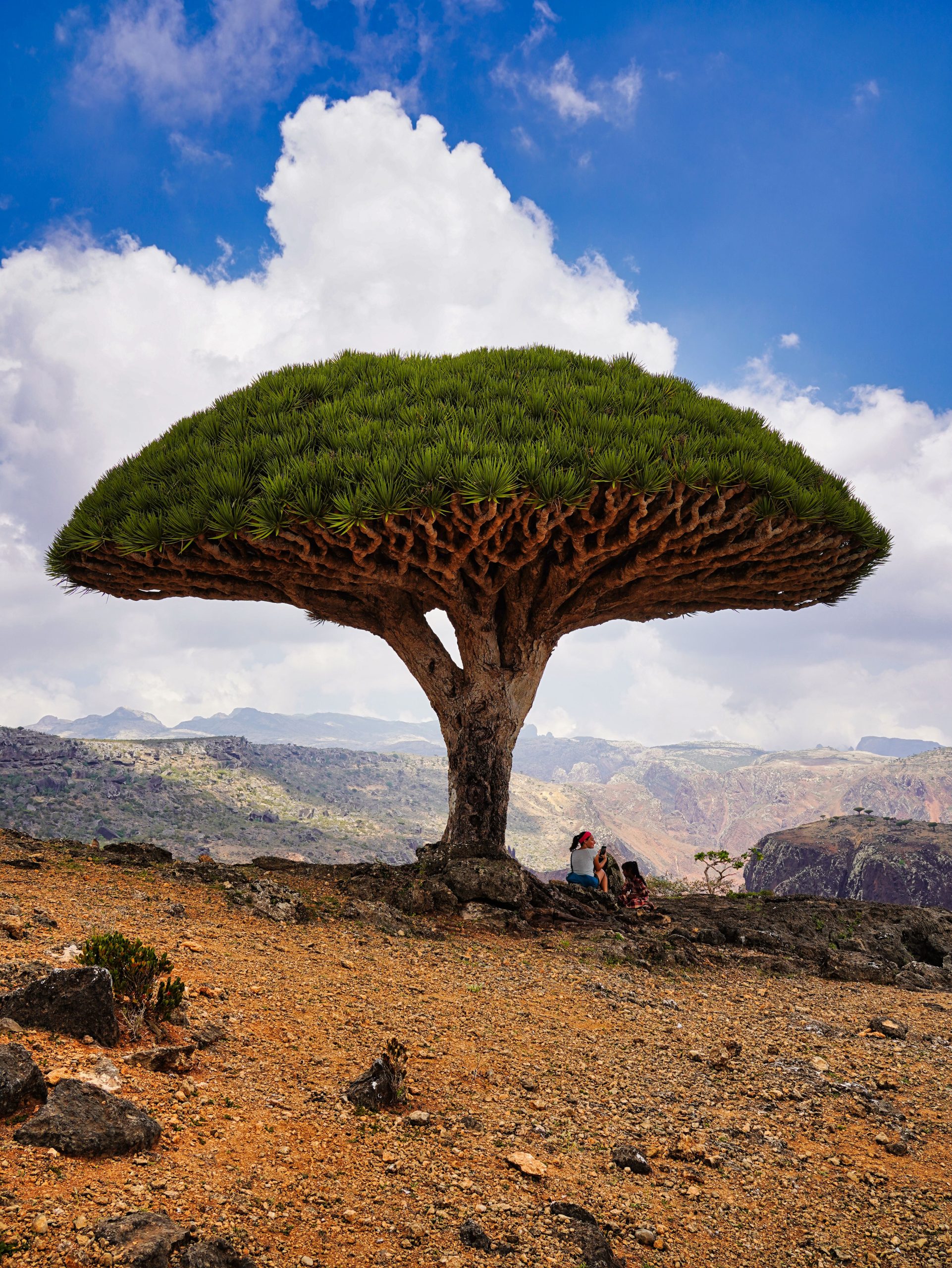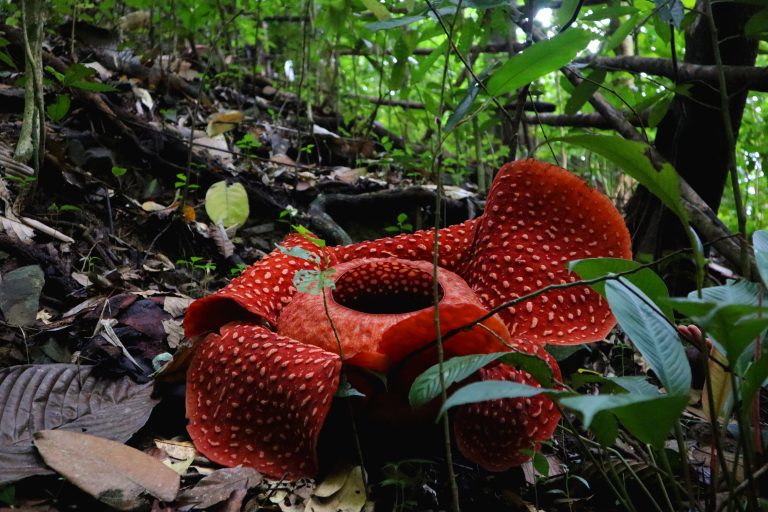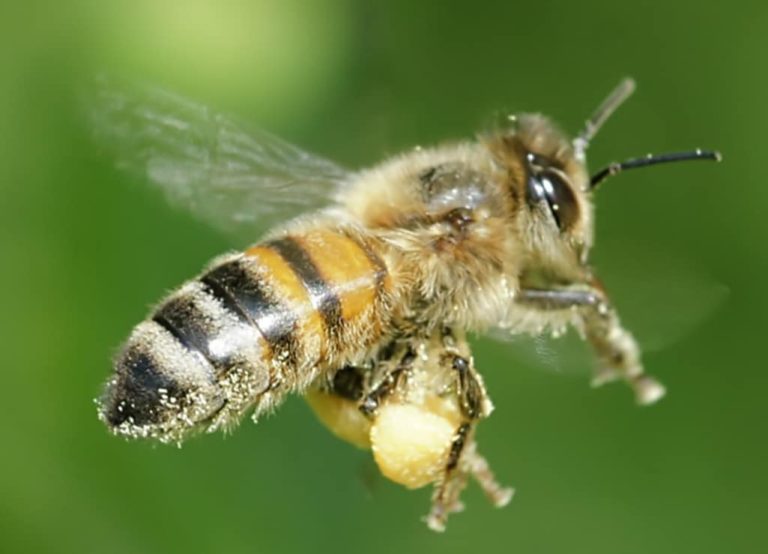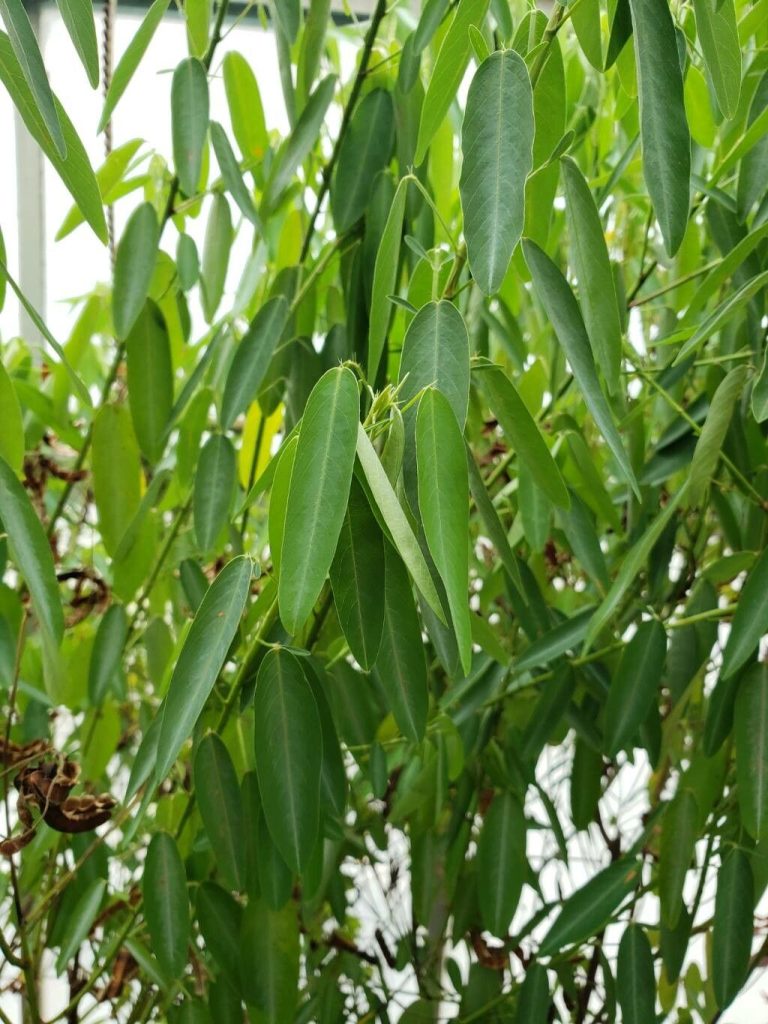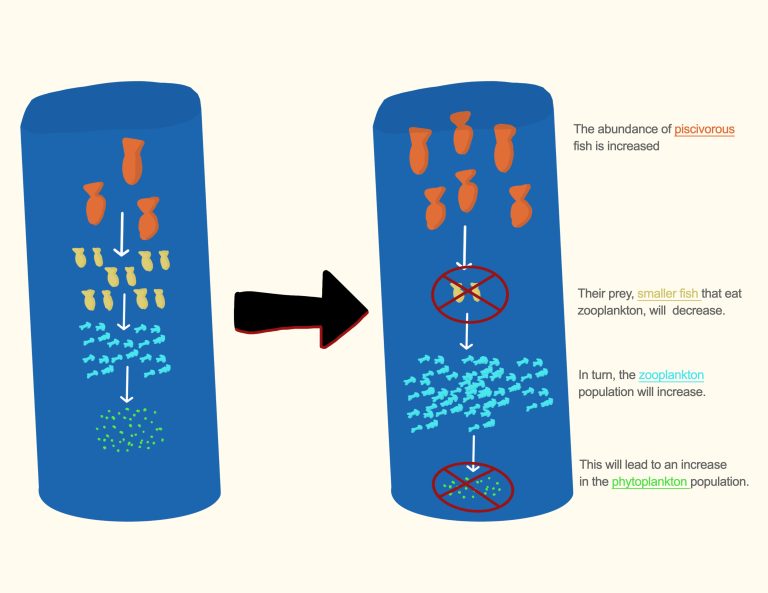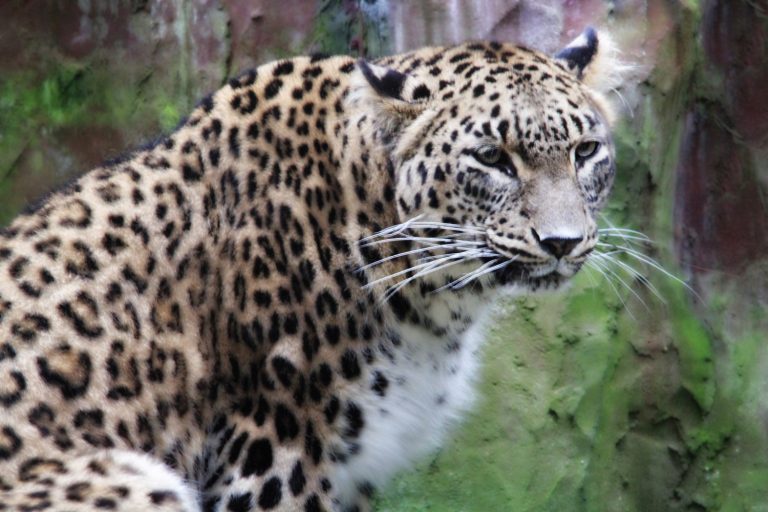Dragon’s Blood Tree: The Strange Bleeding Tree of Socotra
What if I told you there’s a tree that grows in harsh, arid environments quite resiliently, has a strange, alien-like appearance, and oozes red-colored sap when its bark is cut as if it’s bleeding?
That’s the Socotra Dragon’s Blood Tree, and there are more intriguing facts about it.
Let me take you on a journey exploring this interesting plant in this post.
What is The Dragon’s Blood Tree?
There are about three species of plants called Dragon’s Blood Tree, but what we are exploring in this post is the Socotra Dragon’s blood tree, scientifically known as Dracaena cinnabari.
Basic Biology
Dracaena cinnabari is a monocot, meaning it’s a flowering plant that has only a single seed leaf(cotyledon) in its seeds. Being a monocot also means that it has no tap root. But, it has some features that are not typical of monocots. We will get to it later in the post.
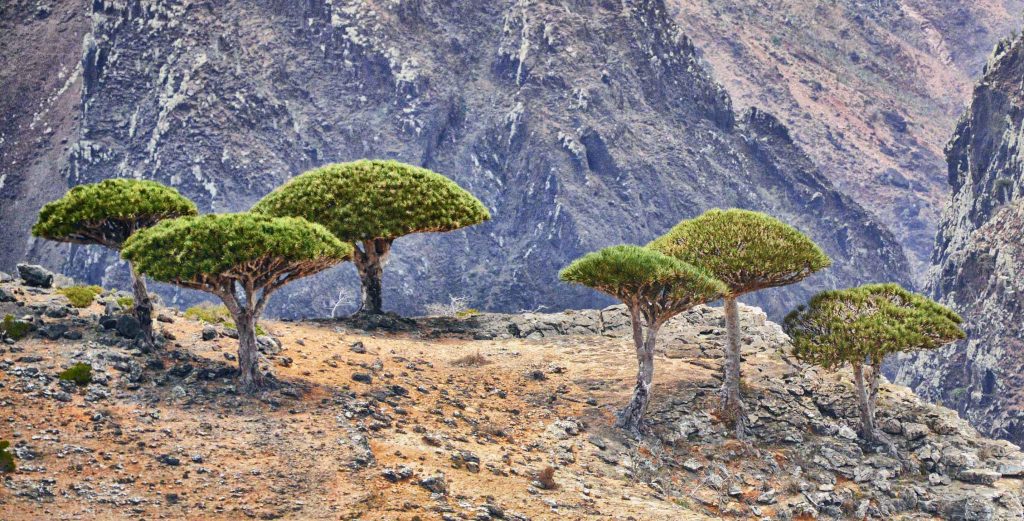
Flickr – Rod Waddington
It’s also an evergreen plant, keeping its leaves throughout the year instead of shedding them seasonally.
Flowering occurs typically in March, on trees that are at least 15 years old. How often it flowers varies on environmental conditions. The flowers are white or green, and fragrant, and appear in thick clusters on branch tips. They attract pollinators, but the plant is mainly self-pollinating.
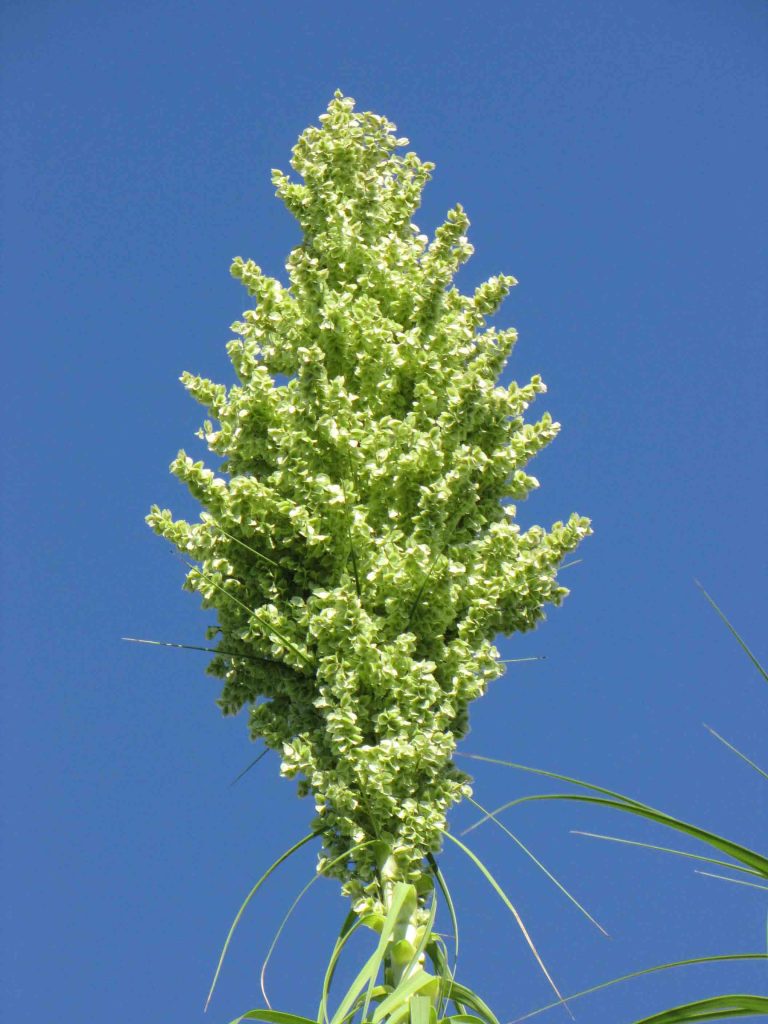
阿橋花譜 HQ Flower Guide
The fruits are small berries that are orange to red.
The seeds are dispersed through the droppings of the birds that eat the berries.
Habitat & Distribution
So where’s our particular Dragon’s blood tree found naturally?
Let’s find out:
Geographical Distribution
Dracaena cinnabari is endemic to the Socotra archipelago of Yemen, a UNESCO World Heritage site known for its unique biodiversity, located in the Indian ocean south of the Arabian peninsula and east of the Horn of Africa.
Specific Habitats
Dragon’s blood tree is mostly found in the misty high-altitude areas and semiarid cloud forests of the Socotra archipelago, especially around the Hajhir Mountains in the center of Socotra Island.
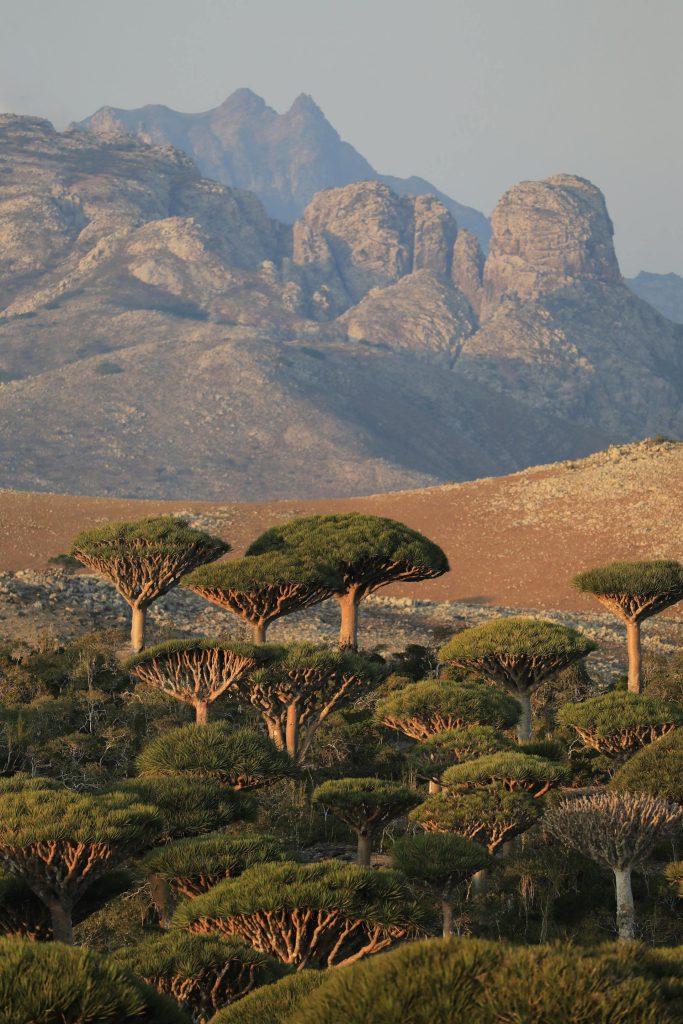
Unique Characteristics of Dracaena cinnabari
Now we come to the most interesting part of our exploration, learning what makes Dragon’s Blood Tree so unusual.
Most of these unique characteristics are the results of evolutionary adaptations stemming from millions of years of isolation and harsh, arid conditions of the Socotra archipelago.
Slow Growth & Longevity
It grows slowly, particularly in the early stages of its development.
In ideal conditions, it grows 1-2 feet(0.3-0.6 meters) per year, but its growth rate is often even slower in the hot desert climate of its natural habitats in Socotra.
The plant takes 10-15 years to be sexually matured, or even longer depending on the availability of moisture and soil quality.
On the other hand, a Dragon’s Blood Tree can live for hundreds of years. Some of the oldest specimens of this species are believed to be 400-500 years old.
The slow growth helps it survive by conserving the limited water available and the long lifespan helps ensure its reproductive success over time against the environmental challenges.
The Umbrella-Shaped Canopy: The Unusual Secondary Growth
Of all the unique characteristics of Dracaena cinnabari, the unusual shape of its canopy may be the most prominent, visual one, giving the tree such an alien-looking appearance.
The canopy looks like an umbrella, consisting of branches emerging from the tip of the stem, and each branch dividing into sections and continuing this division with long, stiff, waxy, upright leaves at the ends.
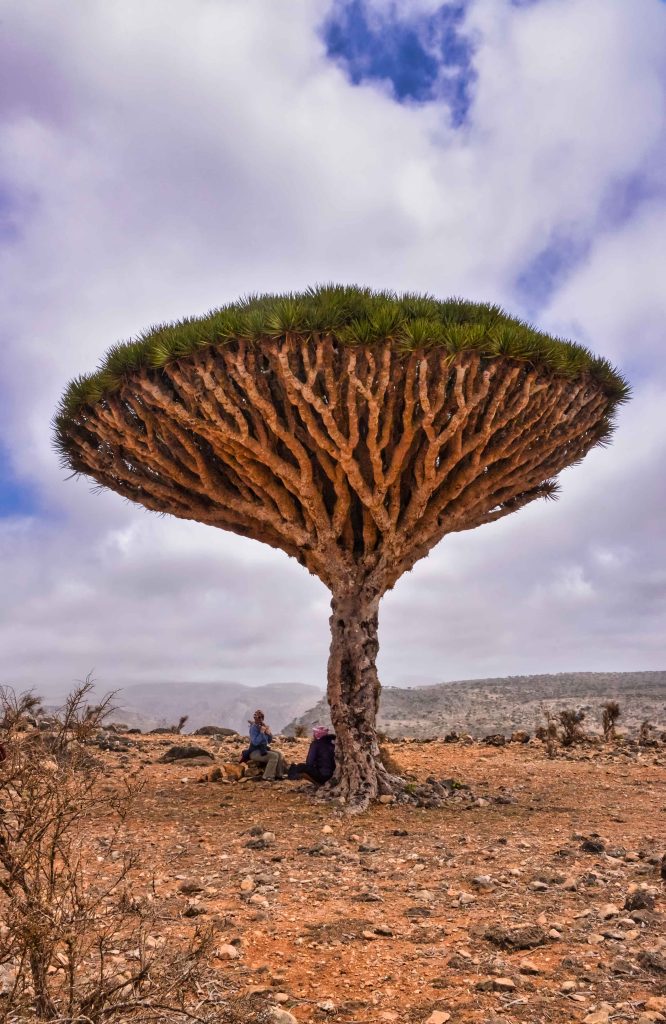
The leaves are dropped every 3-4 years, allowing new leaves to mature.
This is a special adaptation to capture moisture from the mist. The mist condenses into droplets on the leaves, which drip down the leaves, the branches, and the stem into the soil around the base.
The canopy further conserves this captured moisture by shading the soil around the tree, reducing evaporation. This shade also supports the growth of seedlings under the tree.
This canopy structure can only be seen among the matured trees. Young Dragon’s blood trees look like palms, with leaves emerging from the tip of the stem.
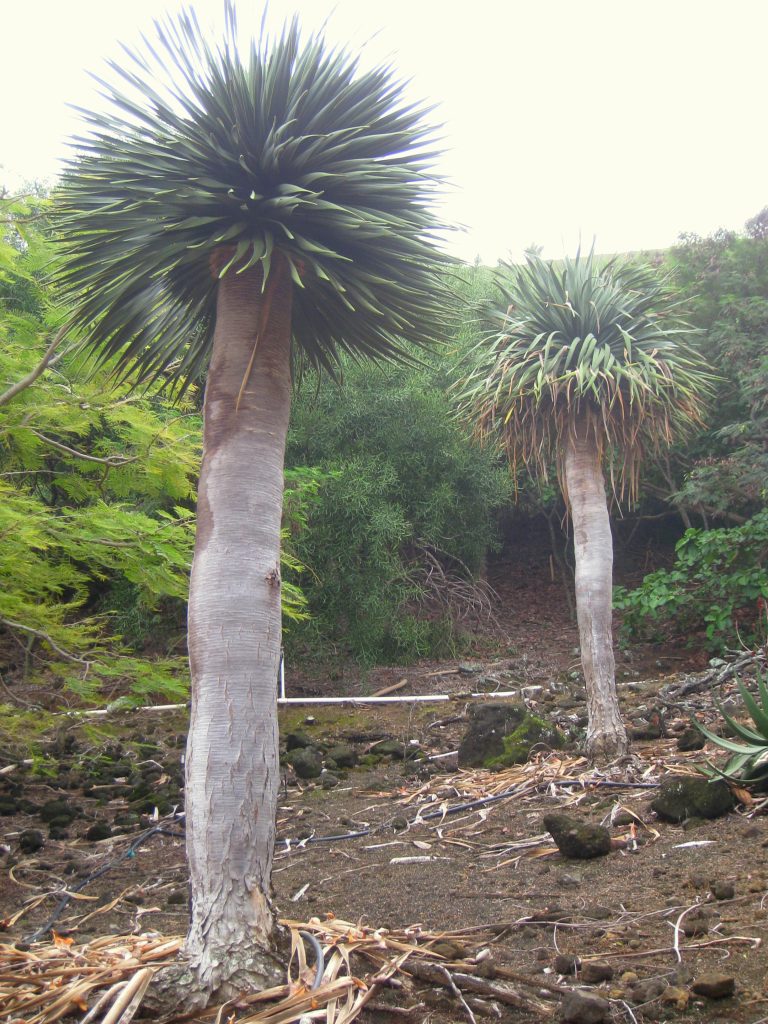
This kind of secondary growth, with branches growing from stem tip, is not typical of monocot trees. Monocots usually grow in height, with new growth happening from the tip of the stem(terminal bud), and stop when they have reached a certain height. This growth of branches happens when the terminal bud’s growth gets interrupted by flowering or stress from harsh environmental conditions.
This peculiar growth pattern seen in the Dragon Blood Tree, and other species of Dracaena genus, is called dracois habitus.
Why Is It Called The Dragon’s Blood Tree?
Now we get to the characteristic that gives the Dragon’s Blood tree its name, the red-colored resin it produces, called the Dragon’s Blood.
This red sap that flows out when the tree’s bark is cut or damaged has been used by local people for a long time in traditional medicine and as a dye and varnish.
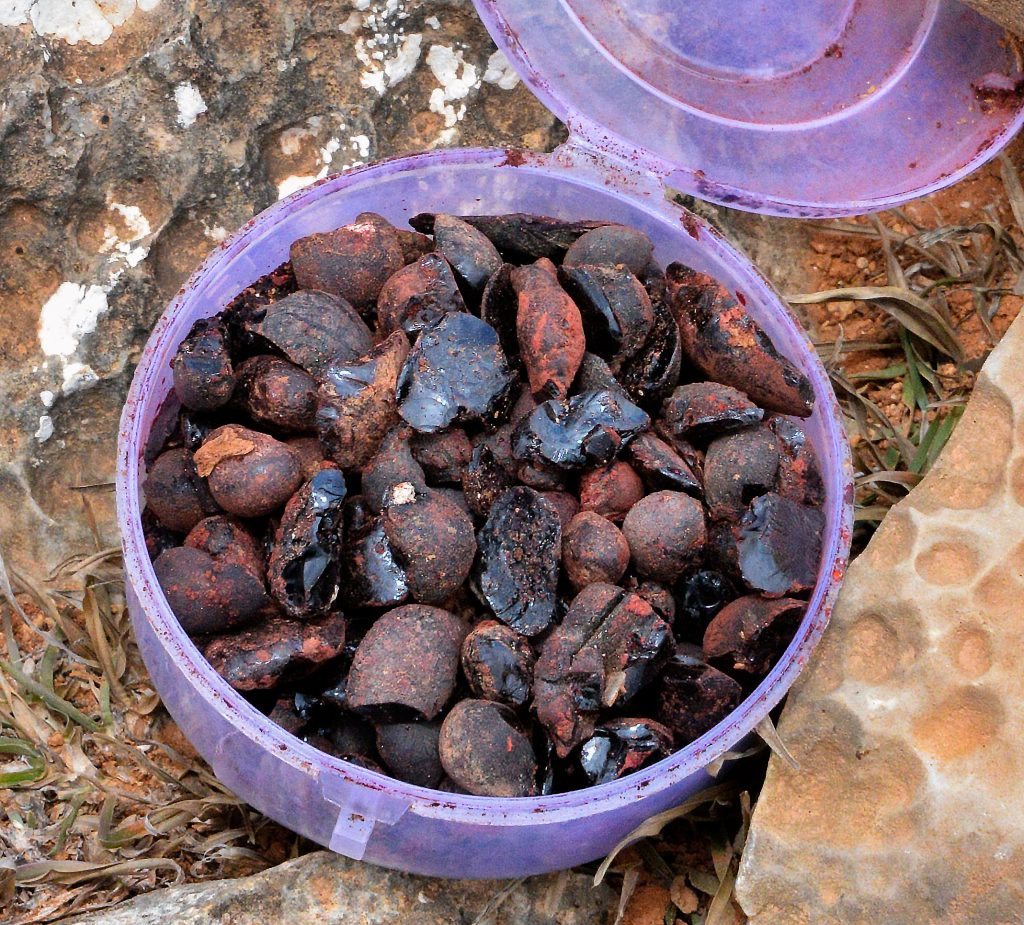
Dried sap from the Dragon’s Blood Tree
The resin contains certain phenolic compounds that give it antibacterial and anti-inflammatory properties, so it can be used to treat wounds, so it’s used to treat conditions like gastric ulcers, various inflammatory conditions and pain, and skin problems like eczema.
The resin has been used as a dye in the Mediterranean region, and Soctran locals use it to dye wool.
It’s also used as a varnish for violins too.
Ecological Importance of The Dragon’s Blood Tree
Dracaena cinnabari is a key player in the stability and balance of the ecosystems of its range.
Ecosystem Support as a Keystone Species
The Socotra Dragon’s Blood Tree is a keystone species that supports other plant and animal species by providing habitat, shade, and food.
The shade, the microclimate, and the cover created by its dense umbrella-like canopy provide habitat for various insects, reptiles, and birds.
Its branches and trunk provide habitat for epiphytic plants such as mosses and ferns.
Its flowers and fruits are food sources for various pollinators and birds.
Contribution to Soil Stability
The plant also protects the soil by preventing erosion with its deep, widespread, fibrous root systems and helping retain soil moisture level by capturing moisture from the mist and sending it down its leaves, branches, and trunk into the soil.
Conservational Status
Let’s see how this important and unusual plant is faring in the wild.
Threats to The Dragon’s Blood Tree
Unfortunately, this important keystone species of a tree is facing some threats in its natural habitats, and has been categorized as “vulnerable” in the IUCN Red Data List.
Habitat fragmentation and degradation caused by increasing infrastructure, tourism, and other industrial development is one such threat.
Overgrazing by the introduced livestock animals is another.
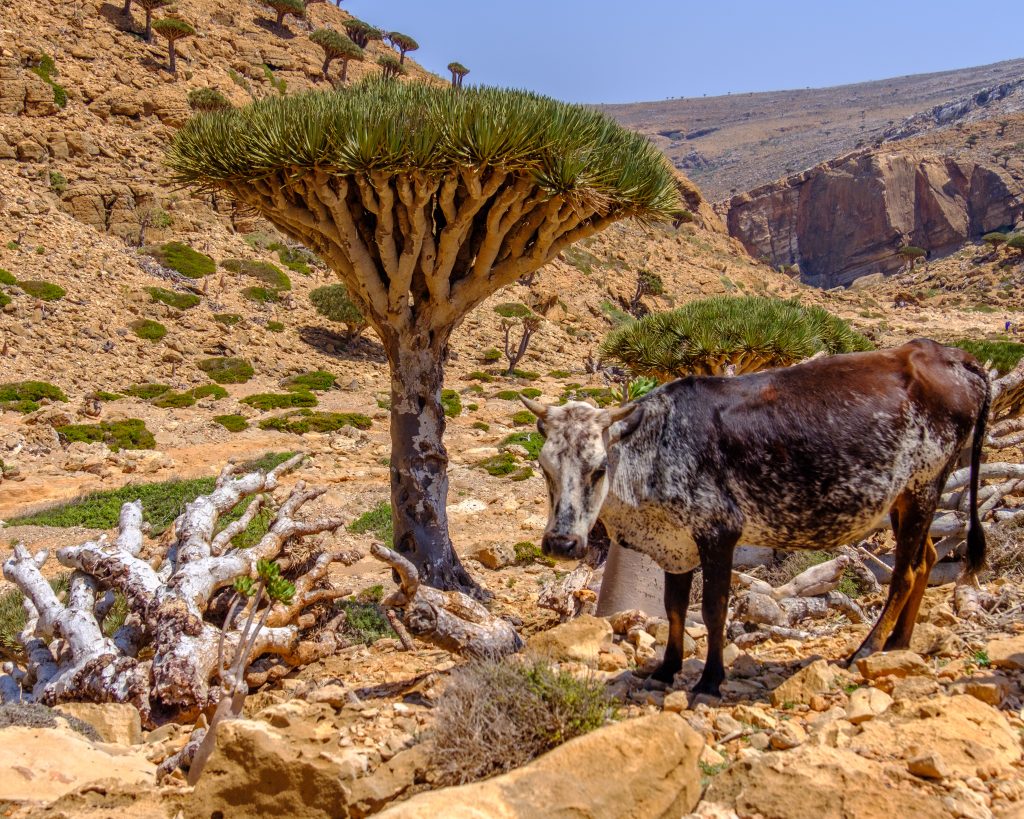
Own work
Reduced rainfall and increasing temperatures caused by climate change are also making things hard for this species to survive.
Even though traditional harvesting of the tree’s resin was done sustainably, increasing demands for the resin can lead to overexploitation of this resource, threading the plant as a species.
Conservation Efforts
There are some existing efforts to protect the Dragon’s Blood Tree from these threats.
The declaration of Socotra archipelago as UNESCO Natural World Heritage due to its rich biodiversity with high endemism among plants and animals has been an important step in this.
Some protected areas have been established to protect the Dragon’s Blood Tree too, such as Skund Nature Sanctuary and Firmihin Forest.
There are some nurseries, led by communities, that grow saplings of this plant, with some having grown over 600 plants during the past two decades.
The local communities are also involved in sustainable tourism, helping protect these trees.
Scientists are studying these trees and the threats they are facing too.
Also, there are plans put together to implement sustainable use of land, and expand protected areas to safeguard the communities Dragon’s Blood Tree, irrigation programs to provide water for the nurseries and trees themselves, seek international support and funding, and raise awareness locally and internationally about the importance of the plant and the implications of the threats it’s facing.
All in a Nutshell
Dragon’s Blood Tree, scientifically known as Dracaena cinnabari, is a plant endemic to the Socotra archipelago.
It gets the name Dragon’s Blood Tree due to the red-colored sap it produces, which has had uses for people as a medicine and a dye.
It has a strange canopy that looks like an upturned umbrella, grows slowly, and lasts for a few hundred years. All these are adaptations to its arid environment.
It’s a keystone species in its habitat, contributing to the water cycle, protecting soil, and providing habitat and food for various epiphytic plants and animals.
Categorized vulnerable in the IUCN Red List, it faces threats from human activity and climate change, with some conservation efforts already at work and some being planned.

